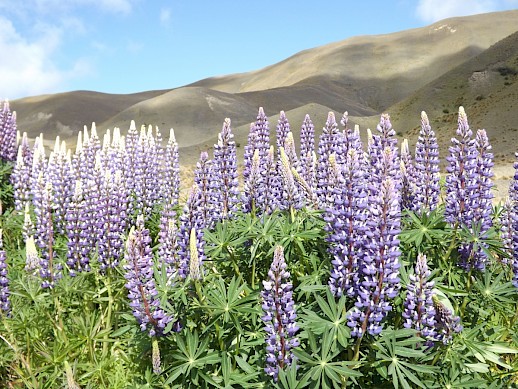Lovely lupins delightful but destructive
They may be stunningly beautiful, but South Island’s Russell lupins are threatening natural areas as they spread along roadsides and into local river systems.
Canterbury and Otago’s braided rivers, as they are known, are stony bottomed and change course depending on the water flow. When the gravel islands in these braided rivers are bare of vegetation, they provide safe nesting havens for endangered birds, such as dotterels and wrybills, which can spot predators such as cats and stoats before they are close enough to catch them. But Russell lupins growing on the braided river banks and islands provide cover for these introduced predators, putting our native nesting birds at risk.
The dense infestations of Russell lupins also interfere with waterflow along these rivers, causing sand and gravel to build up, contributing to flooding and erosion and altering the shape of these rivers. Because they fix their own nitrogen from the air, Russell lupins can grow in very poor soils.
So how do these roadside Russell lupins make it to the braided river systems? Well, Russell lupins produce a large number of seeds every year, and while they spread naturally by water and by the explosion of the pods that contain the seeds, humans have also played a part in moving them from place to place. Stories abound of local folk back in the day spreading the seeds in an attempt to ‘beautify’ roadside areas, and of tourists being encouraged to throw seeds out the window to ‘brighten things up’.
Whether these stories are fact or fiction, it is certainly true that not that long ago, packets of Russell lupin seeds labelled as ‘NZ Wildflowers’ were being sold at tourist stops, alongside seeds for flowering natives such as kowhai and kaka beak. Nowadays, with visitors regularly pulling off the roads in this area to admire the pink and purple of Russell lupins in flower, it is also possible that seeds are being by vehicle tyres from one place to another.
However Russell lupins arrived in this area, and however they are still being spread, it’s time to rethink using them to promote New Zealand to domestic and overseas tourists. Yes, Russell lupins are beautiful, but their beastly behaviour makes them more of a perennial pest than a picturesque photo shot.
